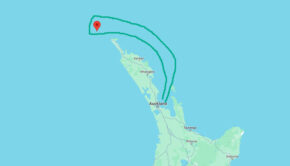How old are you in sailing years?
Published on December 3rd, 2018
The years spent competing in sailing can be based on how many scoring systems you’ve used. We were recently reminded of a few we’d forgotten about, with this list courtesy of noticeofrace.net:
Low Point with 1 Point for First place in a race
A low points system where the lowest points wins the series. Points equal their finish in each individual race.
Low Points with 3/4 point for First place in a race
A low points system where the lowest points wins the series. Points equal their finish in each individual race with the exception of the winner. If a competitor wins a race, they receive three quarters (3/4) of a point, thus providing a bonus to those that win a race.
Bonus Points Method
The System works by assigning points for a finish place in a given race with a first place receiving 0 points, second 3 points, third 5.7 points and so on down to seventh place receiving 13 points. For finishes lower then seventh, the score for a race is calculated as finish place plus 6 points.
Like the low points system, this system seems to benefit most for those that consistently win and also benefits those that participate the most in races having consistent finishes towards the top of the fleet.
Cox Sprague High Points System
Cox Sprague is a high points system (click here) that takes into consideration the number of competitors that show at the starting line for a given race, the more boats in the fleet, the more points you receive for a given race.
For example: The first race has 7 competitors, and a first place finish is worth 66 points. The second race in the series has 12 competitors and first place is worth 87 points.
Like the low points bonus system, Cox-Sprague rewards the winners of a race quite well, but the rewards increase as the size of the fleet increases. Compared to the low points system, it also has the ability to reshuffle the middle of the fleet, favoring those that participate in races the most.
Cox Sprague with Perfection (total points/total points possible)
Like the basic Cox Sprague system, C-S with perfection is a high points system. The biggest difference is that after the perfection factor is applied, the first place score is 1 (perfection) with all other places having a decimal score less than one, and greater than zero.
In Summary:
P=R/TPP
Where:
P= Points Received after perfection
R=Points received per table for a given race
TPP=Total Points Possible for that race
Example:
In a fleet of 12 boats, the highest points possible is 87
A first place finish would receive 1 point
The second place finisher receives 81 points
81/87= 0.9310
A third place finish receives 77 points
77/87= 0.8851
The Cox Sprague with Perfection system seems to reduce some disparity in results when the fleet size varies widely from one race to another. It equally rewards the first place finish of a small fleet, and the large fleet to the same score, but gives a higher finish value to each competitor in the larger event. When compared to straight C-S, this system can change greatly the overall winner of a series, and reshuffles the middle only slightly.
Cox Sprague with Perfection has the additional benefit of decreasing the perceived numerical differences between competitors. This can keep participants showing up in a season long series, giving them hope to advance their standings in the fleet.









 We’ll keep your information safe.
We’ll keep your information safe.